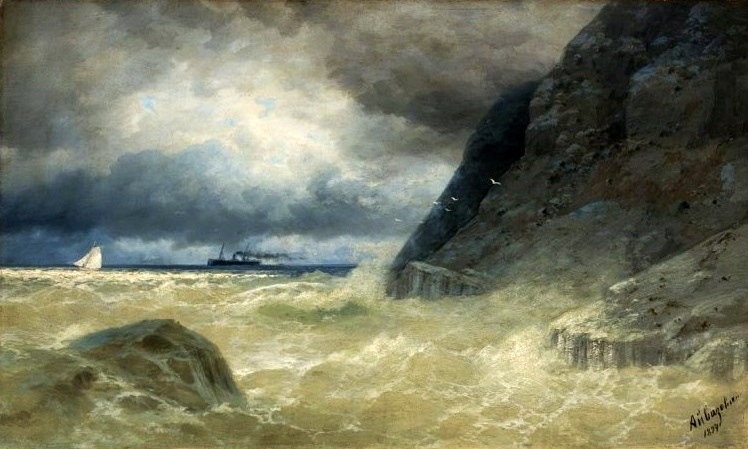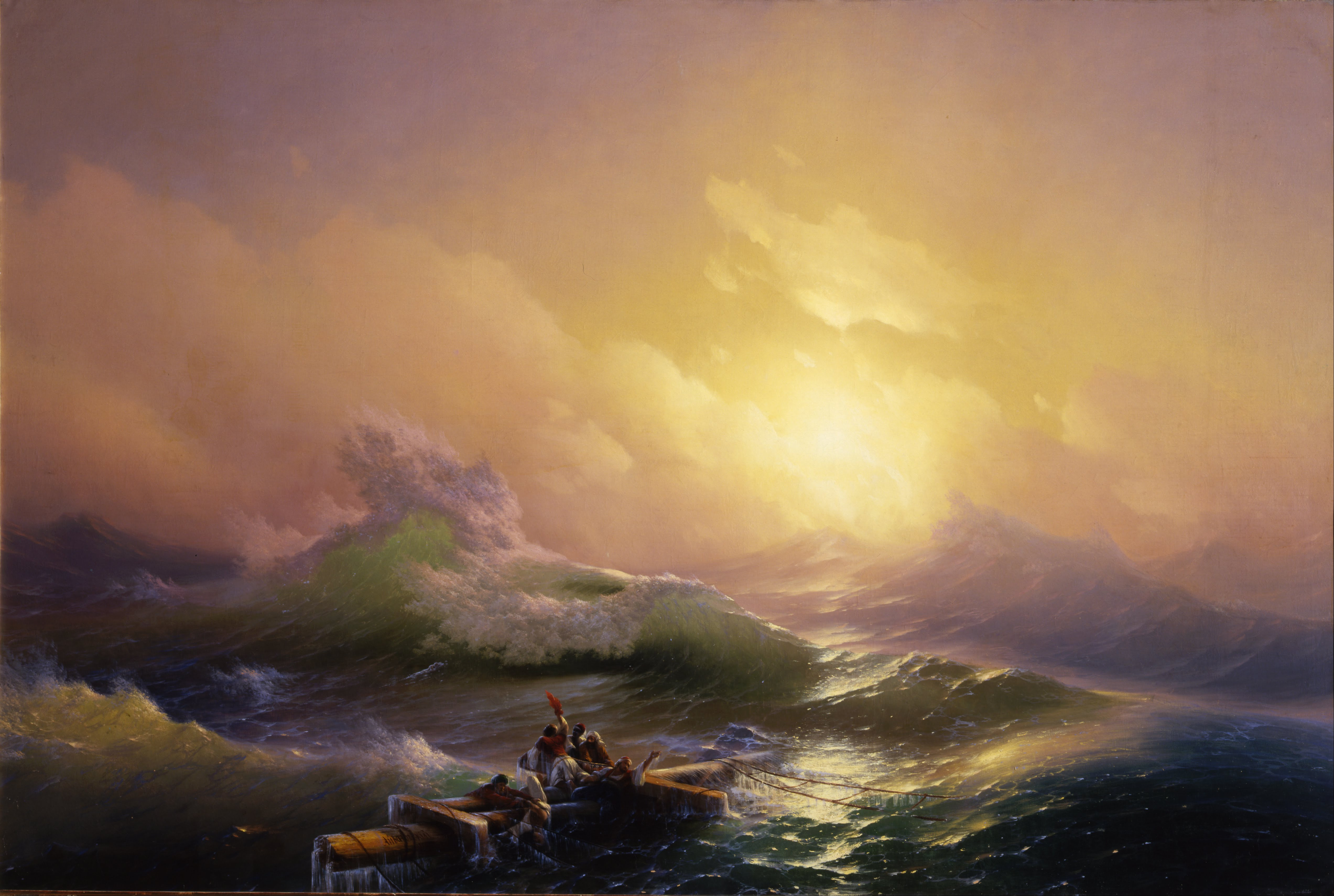― Richard Dawkins
Pure water is colorless. The ocean gets its color from the absorption of color spectra and scattering of sunlight.
 |
| Bracing the Waves by Ivan Aivazovsky, 1890 |
Romantic painter Ivan Aivazovsky (1817-1900) is recognized as one of the most accomplished seascape artists. Scenes depicting a range of ocean moods, like the sun, low on the horizon, illuminating the breaking wave in Bracing the Waves, constitutes the majority of his known work.
Water molecules are known to absorb proportionally more red, yellow, and green wavelengths, leaving the shades of blues and purples that Aivazovsky depicted in Among the Waves.
 |
| Among the Waves by Ivan Aivazovsky, 1898 |
Suspended particles like sand or silt from coastal river runoff, will scatter sunlight as shown in the roiling shore break painted in Seascape with a Steamer.
 |
| Seascape with a Steamer by Ivan Aivazovsky, 1897 |
Suspended phytoplankton contains chlorophyll. Chlorophyll absorbs red and blue wavelengths giving the ocean a greener tint.
 |
| The Ninth Wave by Ivan Aivazovsky, 1850 |
"When Rachel Carson accepted the National Book Award, she said, 'if there is poetry in my book about the sea it is not because I deliberately put it there but because no one could write truthfully about the sea and leave out poetry."
― Jim Lynch, The Highest Tide
REFERENCES
- Computing the ocean's true colors, Mark Dwortzan, Phys.org, 16 September 2016.
- Ocean color, NASA.



